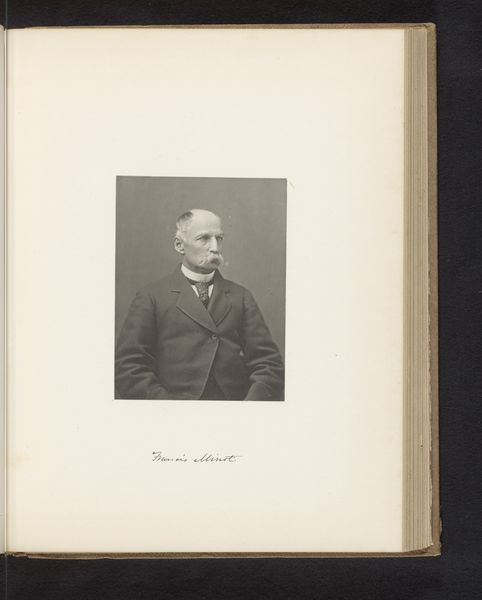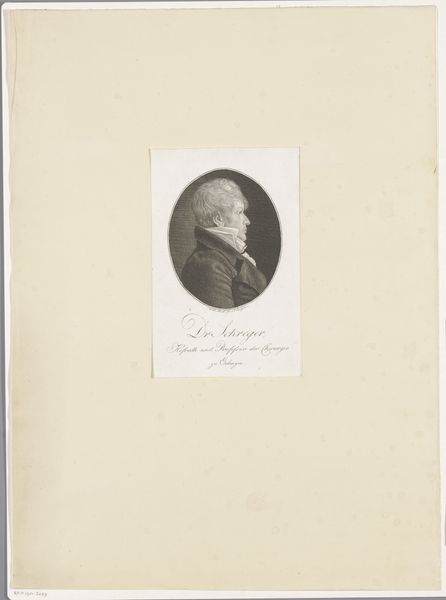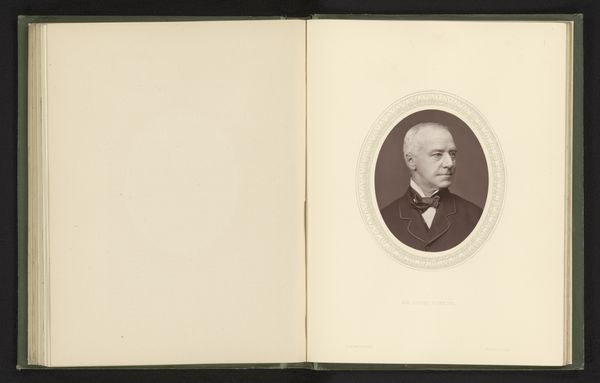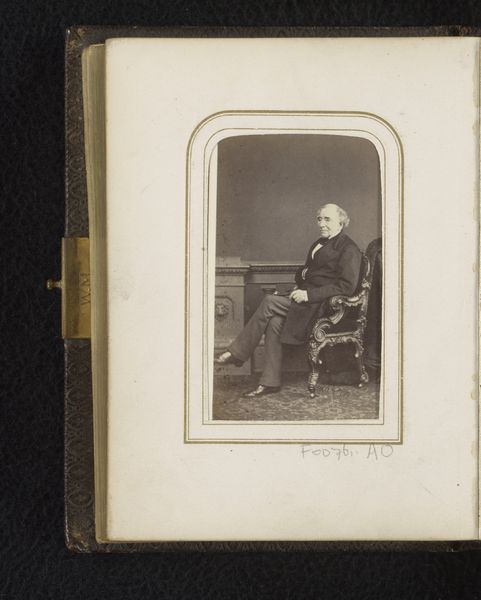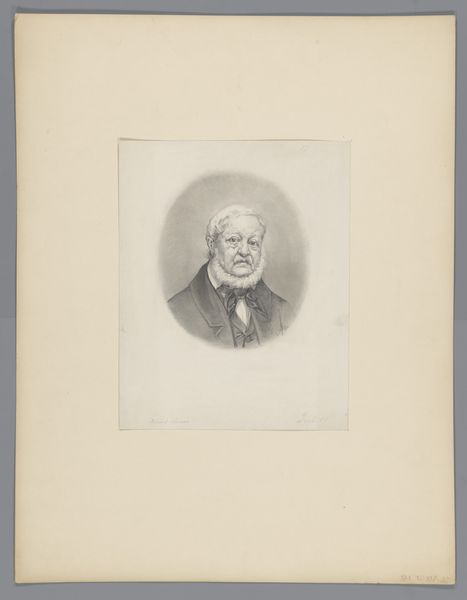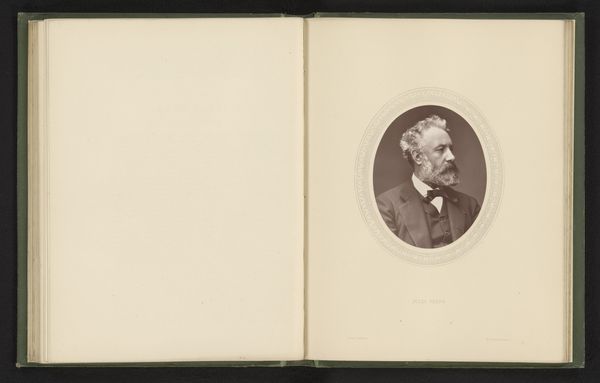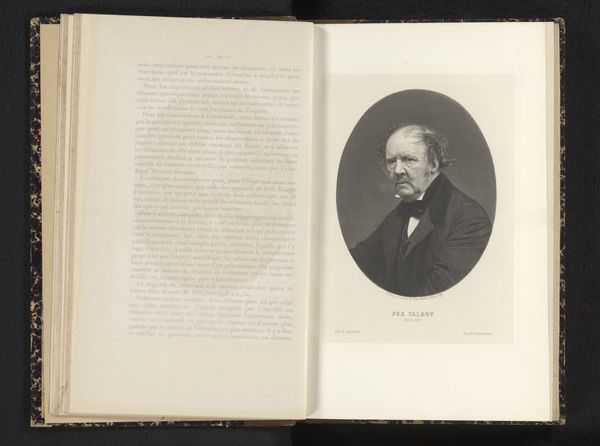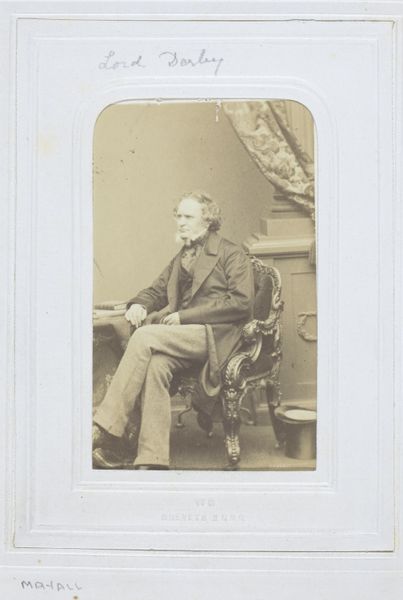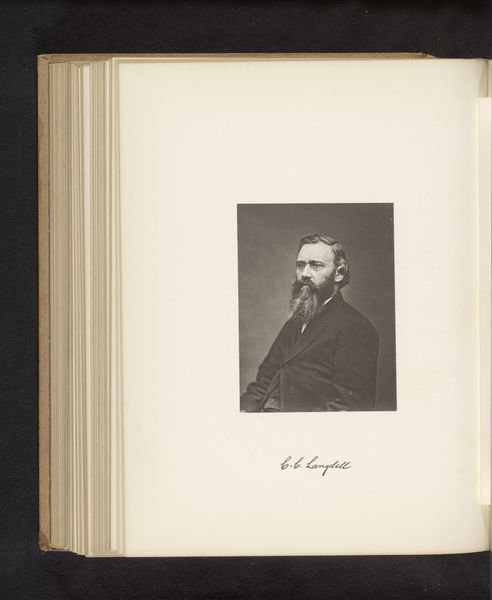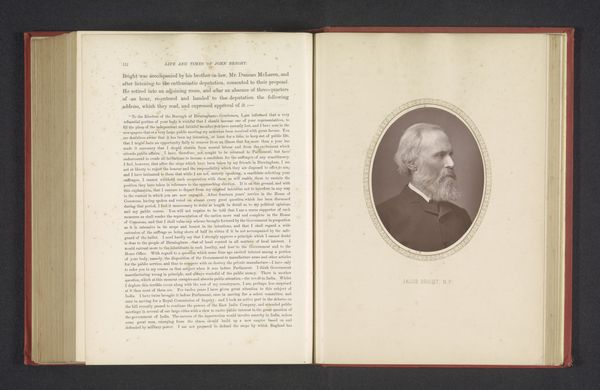
photography
#
portrait
#
photography
#
realism
Dimensions: height 147 mm, width 110 mm
Copyright: Rijks Museum: Open Domain
Editor: Here we have a photographic portrait, thought to have been created before 1875, titled "Portret van Charles Franklin Dunbar". The sitter’s direct gaze strikes me – almost confronting. What’s your take on this work? Curator: Given its date, it reflects photography's growing role in shaping social perceptions of identity and status. This wasn’t just about recording likeness; it was about projecting a particular image to the world, particularly within academic or professional circles. Consider the careful arrangement, the quality of the photographic print itself – it signals importance. How do you think Dunbar, or the institution he was likely connected to, wanted to be perceived? Editor: Sophisticated, cultured...someone of substance. The neat suit, even the subtle lighting, feels deliberate in constructing that image. Did the rise of photography democratize portraiture or simply shift its power dynamics? Curator: A compelling question. On one hand, photography offered a seemingly accessible alternative to painted portraits, yet access was still determined by economic factors and social capital. Moreover, institutions, like Harvard perhaps, used photography to document, classify, and solidify their power through the visual representation of its members. The album itself—the physical binding and order—would speak to that as well. Editor: So, photography became another tool in reinforcing existing hierarchies, despite its potential for wider accessibility. That gives the image a new dimension. Curator: Precisely. And understanding that context helps us appreciate the complexities inherent in what might initially appear as a straightforward portrait. Editor: I hadn't thought about the institutional power at play here, it makes me reconsider how photography was being used in the late 19th century. Thanks for your insights. Curator: Indeed, by analyzing the image within its historical and social frame, we've hopefully unlocked its deeper narrative, and learned something new.
Comments
No comments
Be the first to comment and join the conversation on the ultimate creative platform.
